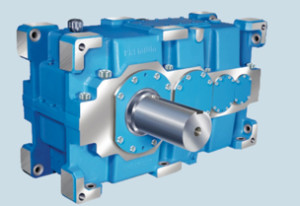Gears are one of the most fundamental transmission devices used in wide ranging applications such as automobiles, bicycles and large industrial equipment. It is an important mechanical component and there are different varieties available such as the helical gears, spur gears, bevel gears, worm gears and so on to meet the varied requirements of customers.
Spur gears are the most simplestform of gears while the helical gears can be called a refined version of the spur. In helical gears the teeth are angled to the gear axis rather than being parallel as in the case of spur gears. They run noiselessly and smoothly and do not vibrate while functioning. Load is spread evenly over the teeth and this contributes towards reducing the wear and tear of the gears. However, the gears are exposed to axial thrust which can be corrected by using special lubricant and thrust bearings.
There are two types of helical gears, namely the Cross helical gears and the Double helical gears. Helical gear dealersor inline helical gear dealersensure that they stock sufficient quantities of both to ensure fulfillment of their customer requirements. Crossed helical gears involve the use of two helical gears for power transmission between non-intersecting and non-parallel shafts. A normal pitch and an identical pressure angle are the two requirements needed for operating the Crossed helical gears with perfection. However, Crossed helical gears as the geared motor dealers would state can be used for a very limited range of applications which involve light loads and are not suited for precision meshes. Some other features of Crossed helical gears besides poor precision rating are skewed shafting, low speeds, high sliding, only point contact and relatively poor velocity ratio.
Double helical gears have a cylindrical shape. They comprise two segments of teeth, left hand and right hand and function through their simultaneous engagement with exactly identically arranged teeth of the mating gear. As two gears are utilized thrust loading is done away with and the thrust load gets totally balanced. This necessitates one member to be able to float axially. However, it has to be ensured that there exists a proper alignment and input of adequate lubrication so that the possibility of all shaft couplings generating large thrust loads does not occur. Application of steel-diaphragm and elastomeric couplings with elevated axial stiffness may be advised.
These gears incorporate the advantages of single helical gears as well as eliminate the thrust loads that are generated internally. This aspect becomes a crucial factor for lowering power losses in extremely high speed units. The advantageous factors include a similar smoothness and noiseless working as in single helical gears. An effective and effortless transfer of motion and torque takes place at quite high rotational velocities. More power with regard to contact of the teeth and sideway force elimination can be obtained in Double helical gears. A bigger face overlap can be got due to elimination of axial thrust which ensures the maintenance of helix angles at about 30 degree.
Each variety of the helical gear has its own characteristics and advantages and hence are useful for different machines and different operating conditions.

